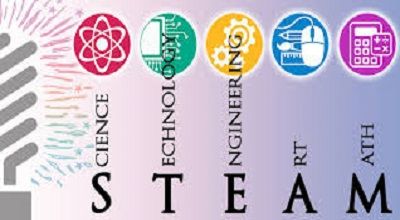Steam Education
STEAM education is an approach to learning that integrates science, technology, engineering, the arts, and mathematics. This educational framework aims to foster creativity, critical thinking, and problem-solving. Solving skills among students through an interdisciplinary and applied approach. It emphasizes the importance of the arts, recognizing that creative thinking and innovation are crucial in all fields. Including those that are science- and technology-oriented.
The importance of STEAM education lies in several key areas:
- Holistic Learning: By combining the sciences with the arts, STEAM education promotes a more holistic understanding of the world. It encourages students to make connections between different subjects, fostering a more comprehensive view of how things work.
- Creativity and Innovation: Integrating arts into the traditional STEM curriculum (Science, Technology, Engineering, and Mathematics) encourages creative thinking. This is vital for problem-solving and innovation, which are essential skills in the modern workforce.
- Engagement and Motivation: STEAM education often involves hands-on learning and real-world applications, which can be more engaging for students. This helps motivate them to learn and develop a deeper understanding of the subject matter.
- Future Job Market: As the job market evolves, skills such as problem-solving, critical thinking, and the ability to innovate are increasingly in demand. STEAM edu prepares students for a wide range of careers, including those in rapidly advancing fields like technology and engineering.
- Adaptability and Lifelong Learning: The interdisciplinary nature of STEAM education teaches students how to learn and adapt. Which is vital in a world where new technologies and ideas are constantly emerging.
Benefits of STEAM education
STEAM education, which integrates science, technology, engineering, the arts, and mathematics. Offers a multitude of benefits that prepare students for the challenges and opportunities of the 21st century. These benefits include:
- Fosters Creativity and Innovation: By incorporating the arts into STEM (science, technology, engineering, and mathematics), STEAM education encourages creative thinking. This is essential for innovation and problem-solving in all fields, including science and technology.
- Enhances Critical Thinking: Students learn to analyze and evaluate information critically. This skill is crucial in a world where people are constantly inundated with data and information.
- Improves Problem-Solving Skills: STEAM edu emphasizes hands-on learning and real-world applications, which helps students develop strong problem-solving skills. These skills are valuable in all areas of life, not just in scientific or technical fields.
- Encourages Collaboration: Many STEAM projects require teamwork, teaching students how to collaborate, communicate effectively, and work in diverse groups. These social skills are vital in both personal and professional settings.
- Prepares for Future Careers: With a focus on emerging fields and technologies. Now STEAM edu prepares students for jobs that may not even exist yet. It equips them with a versatile skill set that is highly valued in the modern job market.
- Integrates Multiple Disciplines: This approach shows students how different subjects are interconnected. Promoting a more comprehensive understanding of the world around them.
More Benefits…
- Builds Resilience and Adaptability: Through experimental and exploratory learning. Students learn to embrace failure as part of the learning process, fostering resilience and adaptability.
- Encourages Lifelong Learning: STEAM education promotes curiosity and a love for learning, which can lead to students becoming lifelong learners.
- Supports Diverse Learning Styles: With its varied approach, STEAM education caters to different learning styles. Making education more inclusive and effective for a broader range of students.
- Enhances Digital Literacy: Given its emphasis on technology, STEAM edu helps students become more digitally literate, an essential skill in today’s digital world.
- Promotes Equity and Inclusion: By providing diverse learning experiences and challenging traditional views on subjects like science and math. STEAM edu can help bridge gaps and promote equity in education.
Summary
In summary, STEAM education is not just about teaching specific subjects. It’s about a way of thinking and learning that equips students with the skills and mindset needed to succeed in the 21st century.
In essence, the benefits of STEAM education extend beyond academic achievement. Helping to develop well-rounded, adaptable individuals equipped with the skills needed to navigate and contribute to an increasingly complex world.
